Lots of things you can use make your DIY weighted blanket heavy. Some are things you will find around the house, and others your might need to order. I will talk about everything from pebbles, to rice, to washers and explain the problems and benefits of each. Also Don’t forget to Read Part -1 – Weighted Blanket Patterns
What should I use to weight my blanket?
The most common and widely used item is Poly Pellets, so I’ll talk about that last. But there are so many things that can be used. Deciding which is best for you, has many factors.
You need to consider…
- Cost
- Washing
- Safety
- Environmental Considerations
- Allergies
- Sensory Preferences
Cost: Free or Cheep
So let’s get down to it. The cheapest thing you can fill your blanket with is something free. That is something you already have around the house that doesn’t have another use. Practically anything can work if you are making something like Cheryl’s Weighted Blanket, which has removable weights. The designer of this blanket used spare sheets. As long as you can contain it safely (they are not pointy) and you can subdivide it so the weight is evenly distributed, you can probably use it. Here are some ideas. I’ll talk about a few of them specifically below.
Note: Some may get hot in the dryer and wear out your fabric more quickly
- Sand
- Small Metal Washers
- Aquarium Gravel
- Fabric – Like a Sheet
- Rice
- Beans
The beans, corn, and metal washers are all going to have a texture through the blanket and a sound when they move. You can. Fleece fabric can help solve this, or a thicker fabric like duck. Or batting, or poly fill (stuffing) with the weighting material. I think my favorite in this category is fabric or rice. Note that washers can be really useful in a weighted vest, as they are slim and heavy.
Fabric is Heavy
Cheryl’s Weighted Blanket from the the Project Linus Website, actually suggests using sheets for the weight. Do you have extra sheets in the closet? I do! There you go, free weight! You can also get sheets at Goodwill for about $3, or some hospitals give worn sheets away for free. (A top sheet for a twin bed weights about 1 lb.) You could also use yardage of Muslin, which is cheap. Along the same line, you could also just use naturally heavy fabric like denim or canvas, to make either the weights for the whole quilt.
Fabric is a particularly great option for people who are sensitive to noise. Poly Pellets make a noise when they move inside the blanket and this sound really bugs some people. You can also deaden the noise by using a fuzzie fabric like fleece. Glass beads can help with the noise too, more on that later. (Image below from an Nancy Zeiman episode that featured Cheryl’s Weighted Blanket)
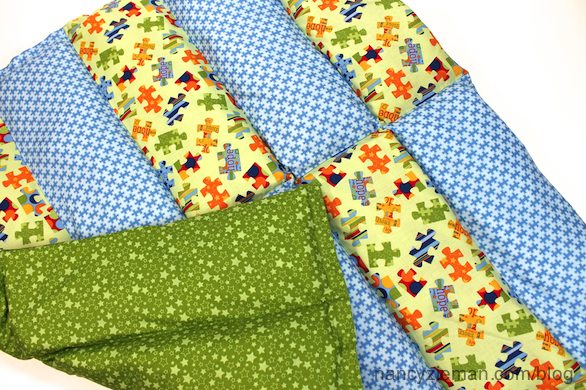
Rice Baggies and Duct Tape? Not for Blankets!
There is a very popular blog post about making weighted lap pads with baggies of rice and duct tape. This might fine for a lap pad, but the safety of having these material in a sleeping situation is questionable. I don’t recommend it for a blanket, even though many people say the construction lasts a long time. It certainly doesn’t wash, and is not breathable.

“Natural” Materials
In the above example, of the rice baggies, the plastic is the part that worries me, not the rice. (Although I personally am allergic to rice. Crazy! Right?) You could use rice, beans, or other natural materials like buckwheat hulls or lavender heads as the weight, but none of these are washable. Some of them do work great in microwaveable heating pads though. So if you want to use one of these to weight your blanket, just make sure the weights are removable in the design you pick. Be aware that if they get and stay wet, they can grow mold. (I’m also allergic to mold.) You can dry them out on a regular basis by sticking the weights in the microwave or dryer, as long as they inside fabric not plastic. Glass is also a natural material, keep reading.
Poly Pellets
The most common weight is Poly Pellets. The best price I have found is at Primo Plastic Pellets. They include the price of shipping in the their costs, so you don’t have do all the math when you are comparing. Buy 5 to 50 lbs. My 50 lb order came packed in strong bags in an appropriate size box. They also promise to beat other prices and they are made in the USA. (Gosh I sound like an ad, but I’m not affiliated)
- This is a 100% polypropylene pellet. Often referred to as PP, poly or polypro
- One cup weighs approximately 5 ounces
These are the pellets that I have chosen to use: Plastic Poly Pellets. They are smooth so I don’t have to worry about excessive wear on my fabric. Some pellets can be rough on quilters cotton. You may want to use two layers of fabric on each side on a conventionally patterned weighted blanket for added durability and longevity. A hole or broken seam would mean Pellets in your washer or dryers. NOT fun! You may also want to put a conventional made weighted blanket inside a slipcover. You can check the slipcover for beads before it is washed and be alerted if there is a hole.
If you don’t want to order poly pellets, you can also get pellets from Joann and Walmart locally.
Poly Bead Pros:
- Machine Washable
- Machine Dryable? People differ on their opinion here
- Affordable – certainly more expensive than free options, but not terrible.
- Don’t mold / hygenic
- Some are recycled
Poly Bead Cons:
- Sound – you can eliminate it partially by using fussy fabric like fleece next to it.
- Texture – if it’s thin material you can feel the bumps. Again fleece can help solve this, or a thicker fabric like duck. Or batting, or poly fill (stuffing) with the beads.
Glass Beads
Glass beads have very similar pro’s and cons ot Poly beads. They are smaller and denser so less beads are needed to get the weight you want. The smaller beads also cause less noise when you move and have a texture more like sand than tiny pebbles. So they are harder to feel though the fabric. Being so tiny also means that they can slip out between stitches. So you need to use a smaller stitch length (2 or 1.5) and should do a double row of stitching 1/4″ apart. You may also want to put a conventional made weighted blanket inside a slipcover. You can check the slipcover the beads before it is washed and be alerted if there is a hole. These benefits also mean that mean that when you spill them, they are harder to pick up.
Speedy Ninja Tip: If you spill them….Put a sock over the end of your vacuum cleaner hose and a rubber band around the suck cuff. Let the vacuum pull the sock inside the tube and then vacuum up the beads. They will all be captured in the sock and not lost to the carpet.
Glass Bead Pro
- Smaller amounts needed
- Quieter
- smoother texture
- Wash and dry?
Glass Bead Cons
- More expensive
- So tiny that they can escape from seams. – Use smaller stitch and double stitch outer edge, more time spent making it.
Still interested?
I am currently designing a “different kind” of weighted blanket, if you are interested in learning more. Sign up here. I’ll send you an email when it’s done. You can also going the Fabric Ninja Freebie library for DIY sewing tips. Like the Sewing Machine Care and feeding log.
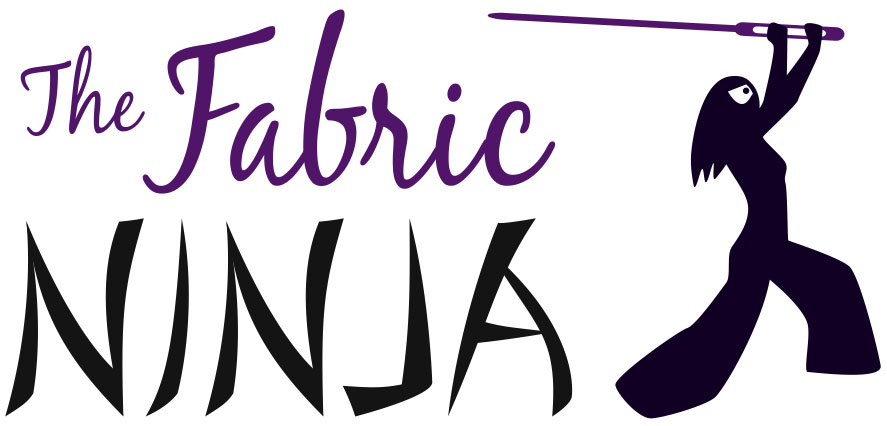
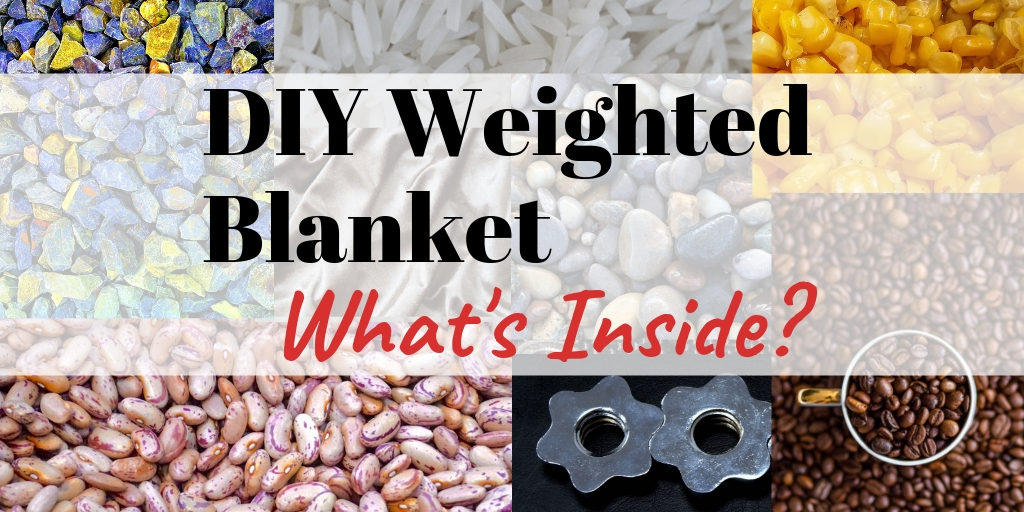
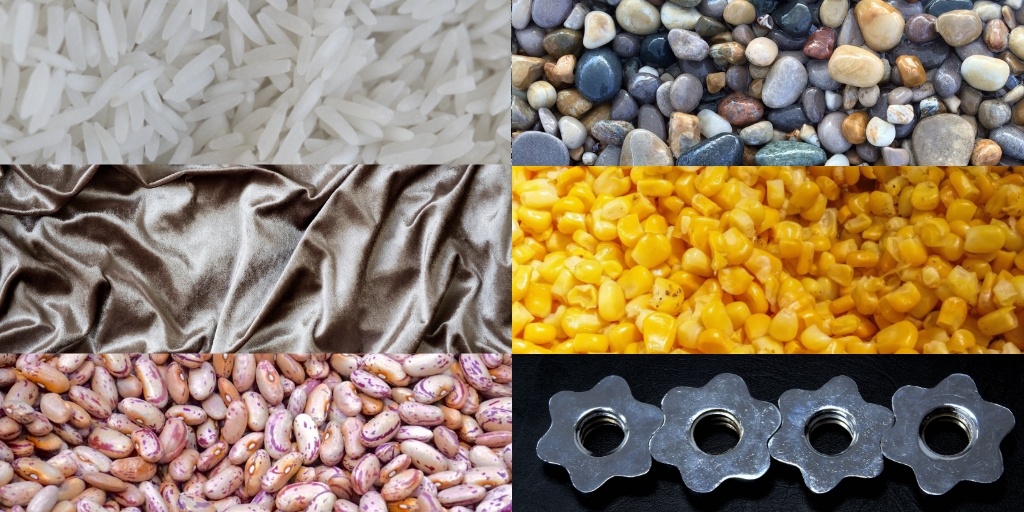
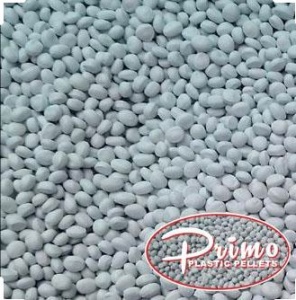
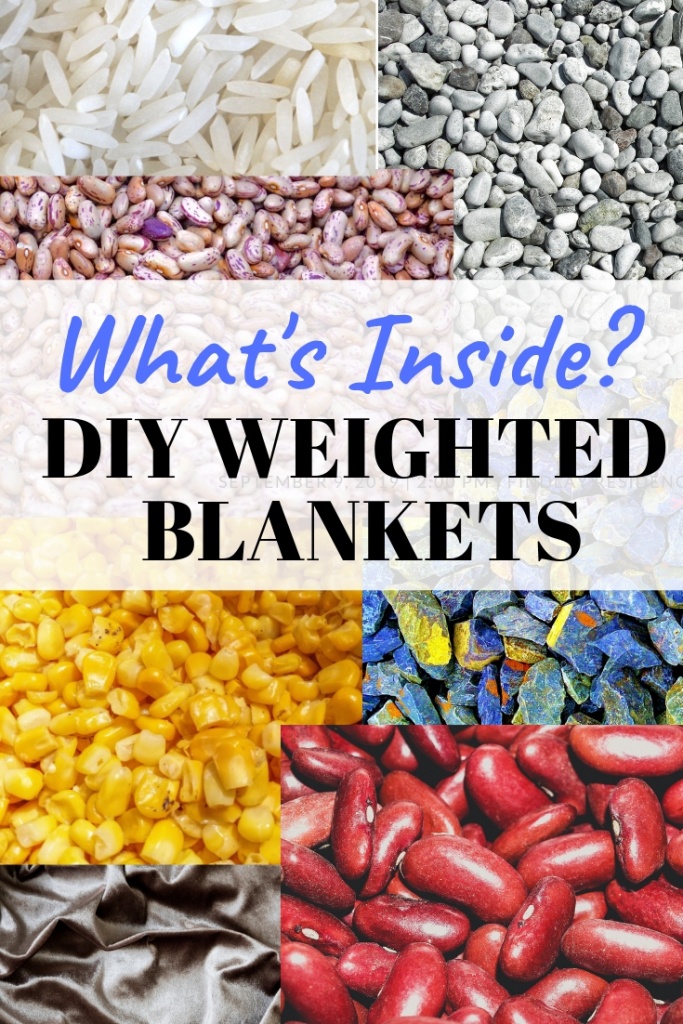
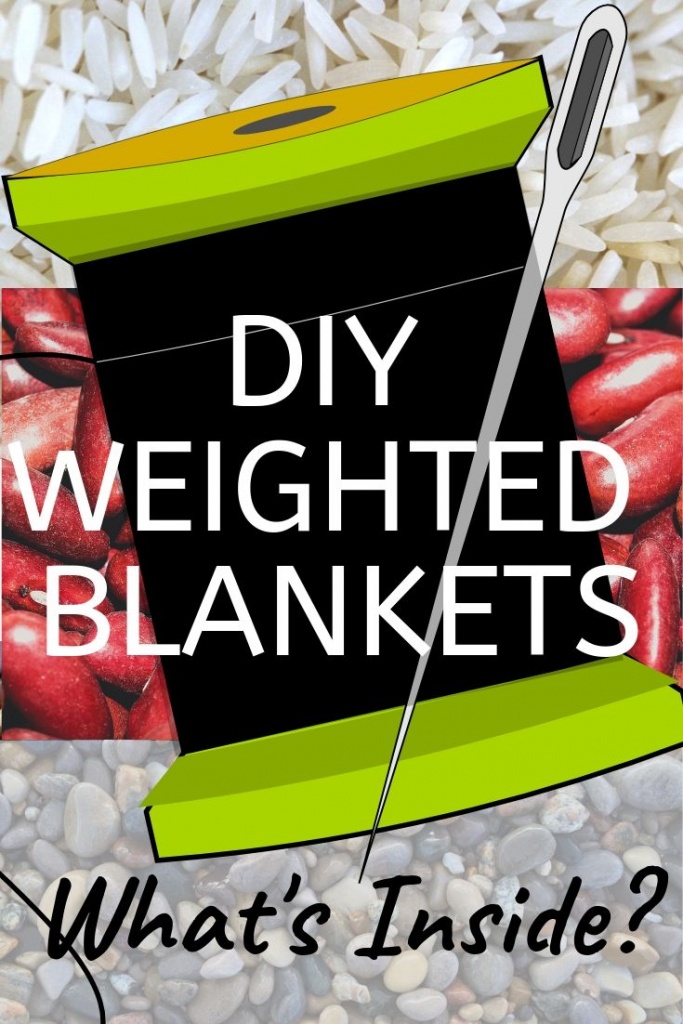
Hi I’m just trying to figure out if there’s an easy way to turn an already made quilt into a weighted blanket can you please advise or send me a link if you already know where I can find information on this.
I think making it like Cheryl’s Weighted Blanket from the the Project Linus would work. Use the quilt as one side and use a sheet on the other side. Using fabric for weight in the channels is quite affordable and ready to clean.